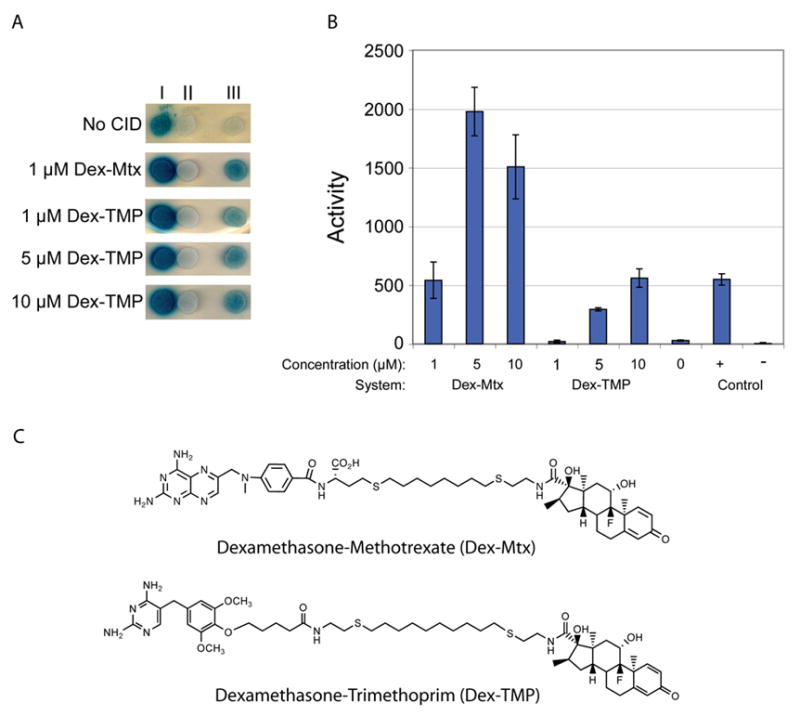Figure 2.

LacZ transcription assays comparing the abilities of dexamethasone-trimethoprim (Dex-TMP) and dexamethasone-methotrexate (Dex-Mtx) to activate transcription in the yeast three-hybrid assay. (A) Columns I–III on each plate correspond to yeast strains containing different DNA binding domain (DBD) and/or activation domain (AD) chimeras, and a lacZ reporter gene: I, plasmid DBD-BAIT, plasmid AD-TARGET; plasmid lacZ reporter. I is a direct protein-protein interaction used as a positive control; II, integrated DBD-DHFR, plasmid AD, plasmid lacZ reporter. II has only the AD half of the AD-GR protein chimera and is used as a negative control; III, plasmid DBD-DHFR, plasmid AD-GR, plasmid lacZ reporter. III is the plasmid based yeast three-hybrid system. Plates were grown for three days with a concentration of small molecule ranging form 1–10 μM and compared to a background of no small molecule. (B) ONPG liquid assays of CID-induced lacZ transcription. The first three bars represent the data for the all plasmid system with varying concentrations of Dex-Mtx, followed by varying concentrations of Dex-TMP and no CID. The last two rows are the positive and negative controls. (C) The structures of the two small molecules used in the study Dex-Mtx and Dex-TMP.
